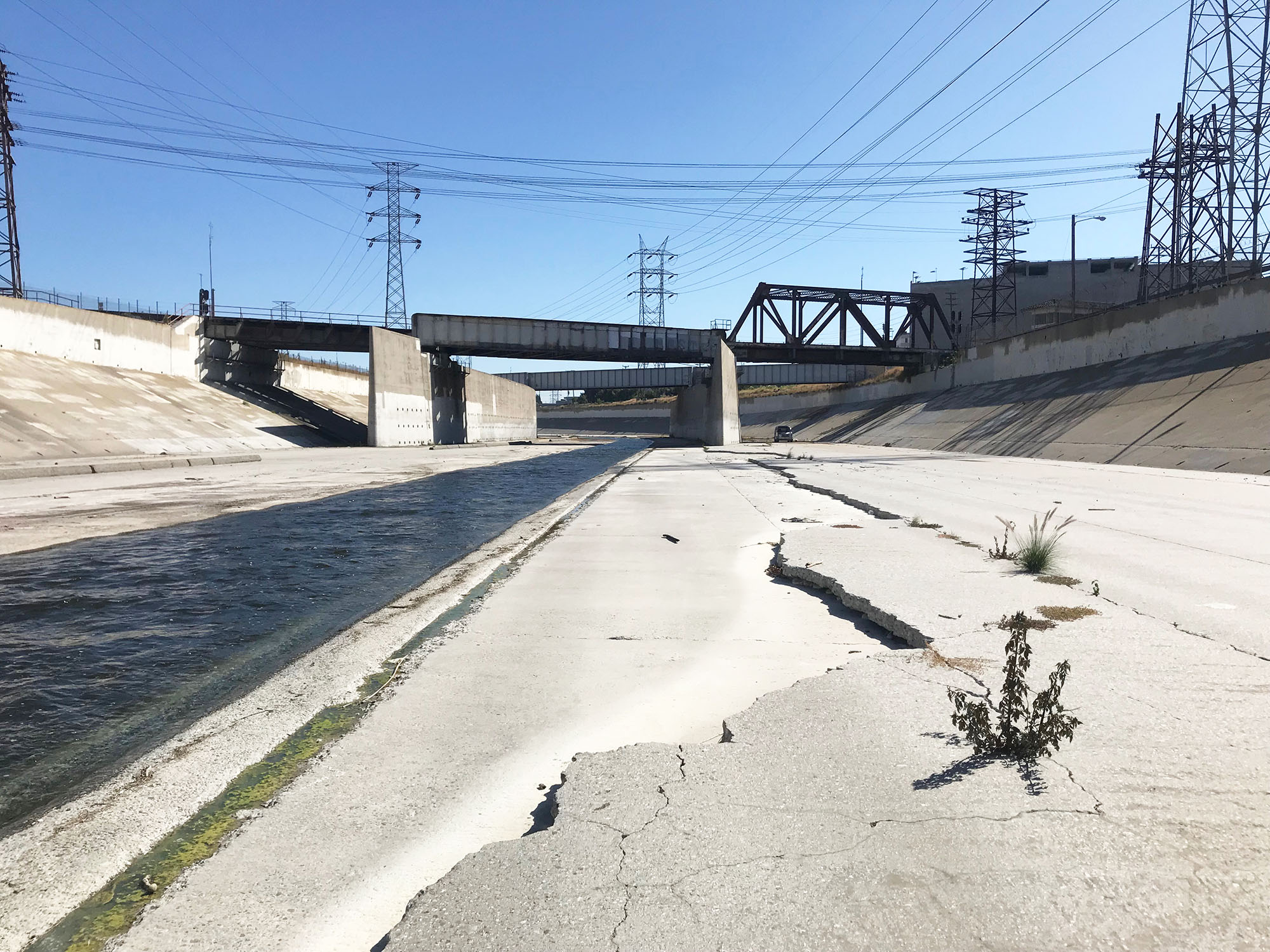Longitudinal Landscapes: Memory, Medium, and Mobilization

Los Angeles River (photo by Justine Holzman)
LAN3016Y F
Instructor: Justine Holzman
Meeting Section: L0101
Tuesday, 9:00am - 1:00pm, 2:00pm - 6:00pm; Friday, 2:00pm - 6:00pm
If not for the galvanizing effect of a set of historical ideas — the belief that a site, destroyed and degraded by human industry, could be transformed into something evocative of its original condition through the power of ‘nature’ guided by enlightened design — Los Angeles might have continued to forget that it ever was a river city. –Vittoria di Palma and Alexander Robinson (2018)
The Longitudinal Landscapes: memory, medium, and mobilization option studio examines the unmaking and redesign of channelized rivers as spaces for social and ecological vitality. The broad project of modernity assisted by techno-utopian engineering visions plumbed rivers around the world into fast-flowing single-benefit concretized channels. As cities have transformed around these seemingly functional hydrologic systems, the pressures of highly urbanized watersheds alongside the impacts of climate change are exposing the limitations and failures of original designs. Persistent and pervasive flooding in river cities (particularly those on the coast where the pressures of sea level rise intensify fluvial flooding) has galvanized large-scale efforts for river modification to address growing flood capacity needs. Additionally, the limitations of these engineered systems to support their technical, ecological, and human dependents has captured the public’s collective imagination through the work of artists, activists, and environmentalists. Landscape Architectural intervention and collaboration to unmake and re-envision fluvial landscapes are challenging technical understandings of design performance and creating new space for public engagement.
The studio will first study the ongoing transformation of the mouth of the Don River in Toronto to partake in a conceptual design charrette with WaterfronToronto. And second, the yet to be realized revitalization project for the Los Angeles River to design for a pilot channel modification project in early stages of development by the US Army Corps of Engineers. To date, much of the design work on the Los Angeles River has focused on few marquee large-scale (and largely offline the river) projects along its length. In contrast, the studio views the hydrologic system and its associated hydrosocial relations longitudinally—examining and designing the River channel as important connective infrastructure from the mountains to the coast. Students will design the pilot project site in Downtown Los Angeles with multiple benefits for public access and engagement, hydrology, vegetation, and habitat. As a pilot project, the studio will explore the space between prototype, model, test, and experiment—working to produce designs that engage aesthetics, measurement, and analysis as important instruments of hydrosociality and ecological management. In this endeavor, the studio will take inspiration from the many past and ongoing cultural interpretations and engagements with this iconic infrastructural landscape. Our relationship with the River will begin with studies of perception, experience, and consciousness, exploring how the particular genius and morphology of the Los Angeles River has produced a powerful artistic and activist resonance, with particular emphasis on the role of the arts, alternative practices, movement, and aesthetics. The design work will manifest in proposals that consider the pilot project as a constructible site that engages the public and decision-makers in its experimental qualities. To function as an experimental site, the design will be considered through qualitative and quantitative understandings of landscape performance and change.
The Details
The studio will provide an optional field trip to Los Angeles from October 04-09 where the students will have the opportunity to explore the geography of the Los Angeles River, conduct fieldwork, participate in a design charrette, and engage with local designers and stakeholders. On the trip, students will attend a one-day symposium on the Los Angeles River supported by Places Design Observer at the University of Southern California (USC). Alexander Robinson and Justine Holzman as a collaborative effort will lead an experiential tour of the River, fieldwork, and full-scale design charrette with USC and UofT students. During this time, we will speak with design professionals engaged in transformative work and visit some of the iconic and contemporary landscape (and) architecture of the sprawling city. The studio will be supported by workshops on sensing and monitoring technologies for landscapes led by Cy Keener (digital and environmental artist) and Justine Holzman.
Instructor Bio:
Justine Holzman is an assistant professor of landscape architecture at the University of Toronto and a member of the Dredge Research Collaborative, Justine Holzman researches landscape infrastructure, responsive technologies in landscape architecture, and the epistemic history of scientific landscape modelling. Holzman previously taught at the University of Tennessee and Louisiana State University as a visiting assistant professor. At LSU, Holzman worked as a research fellow with the LSU Coastal Sustainability Studio, a transdisciplinary research studio with scientists, engineers, and designers working on coastal issues in Louisiana. Holzman is co-author of Responsive Landscapes: Strategies for Responsive Technologies in Landscape Architecture (2016), which includes case studies and essays framing interactive or responsive projects and their relationship to landscape and environmental space. Holzman holds an MLA from LSU and a BA in Landscape Architecture from UC Berkeley.

